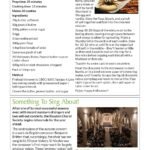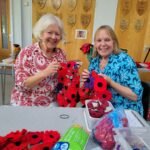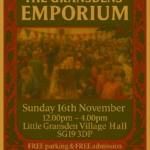By Ken McDonald, Secretary

A barn is essential for a working farm, to store produce, tools and machinery and to house livestock. The Hundred Parishes has many fine examples of ancient barns which are still in use today, albeit sometimes for a purpose not envisaged when they were built. Some have been converted into homes while others have quite varied new uses.
In 1994, Thorley church purchased a dilapidated 16th-century barn which, following restoration, opened for community use as St Barnabas Centre. At Duddenhoe End, the thatched Hamlet Church started life as a barn.
Ashdon and Westmill village halls both began life as barns in the 17th century.
Great Bardfield and Great Saling each have an ancient barn that has been converted into a retail outlet with café, respectively The Blue Egg and Timbers.
In Chrishall, the Red Cow pub offers accommodation in the adjacent 500-year-old thatched barn.
In Little Easton, the Countess of Warwick converted one of her barns into the Barn Theatre. It was used by many famous performers of the early 1900s and still occasionally serves that purpose, on other days being part of a tea room and events venue called Little Easton Manor.
In Great Bardfield, a Grade-I listed, 16th-century brick barn at Great Lodge now serves as the Anne of Cleves Barn wedding venue.
In Widdington, Grade I-listed Priors Hall Barn is a fine example of a medieval barn, dating from the 14th century and now owned by English Heritage. It is said that 400 oak trees were used in its construction. The large doors on either side could be opened for threshing, with the draught blowing the husks away from the grain. Priors Hall Barn is free to visit, open at weekends from April to September.
For further information please see www.hundredparishes.org.uk












